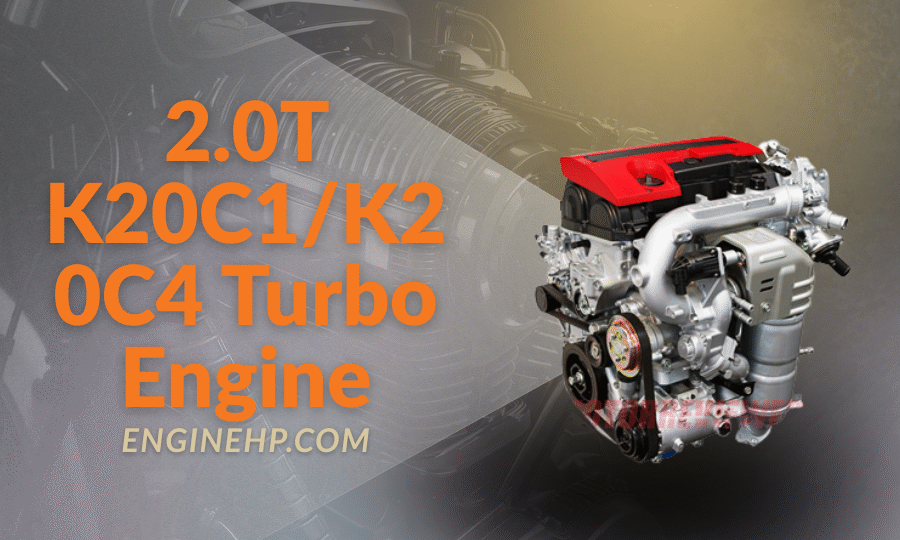
Honda Engines: 2.0T K20C1/K20C4 Turbo Engine Hp, Reliability, and Performance
People who adored Honda cars would swear at naturally aspirated screamers such as the K20A which gave them a great feeling when they revved it up. However, when turbocharging became the standard for efficiency, Honda didn’t just follow but set the bar to new heights. Honda’s 2.0T K20C1/K20C4 turbo engines combine modern forced induction technology with Honda’s exact engineering. They power everything from the everyday Accords up to the track-horse Civic Type Rs. The K20C range is a tale worth telling, no matter if you’re looking to buy for fun or to test the reliability of a vehicle in the long run.
What Is the 2.0T K20C1/K20C4 Turbo Engine?
K20C engine family K20C engine range is part Honda’s Earth Dreams Technology range. These engines are intended to achieve a balance between pollution, performance, and fuel efficiency.
- K20C1: High-performance version that powers Civic Type R since 2017. Civic Type R from 2017.
- K20C4: A more practical version that can be used when used with Honda Accord and Acura TLX sedans.
General Specs (range across variants):
| Manufacturer | Honda Motor Company |
| Production years | 2015-present |
| Cylinder block material | Aluminum |
| Cylinder head material | Aluminum |
| Fuel type | Gasoline |
| Fuel system | Direct fuel injection |
| Configuration | Inline |
| Number of cylinders | 4 |
| Valves per cylinder | 4 |
| Valvetrain layout | DOHC |
| Bore, mm | 86.0 mm (3.39 in) |
| Stroke, mm | 85.9 mm (3.38 in) |
| Displacement, cc | 1,996 cc (121.8 cu in) |
| Type of internal combustion engine | Four-stroke, turbocharged |
| Compression Ratio | 9.8:1 |
| Power, hp | 252-306 hp (188-228 kW)/ 6,500 |
| Torque, lb ft | 273-295 lb-ft (370-400 Nm)/ 1,500-4,000 |
| Engine weight | – |
| Firing order | 1-3-4-2 |
| Engine oil capacity, liter | 5.4 l (5.7 qt) |
| 5.4 l (5.7 qt) | 0.4 l (0.4 qt) – oil filter |
| Engine oil weight | SAE 0W-20 |
| Oil recommendations and capacity may vary depending on the car model, year, and market. Please check the service manual specific to your vehicle! | |
| Oil change interval, mile | 6,000 (10,000 km)/12 months |
| Cars with this engine | Honda Civic, Honda Civic Type-R, Honda HR-V, Honda Accord, Acura RDX, Acura TLX, Acura Integra Type S |
| Honda Civic, Honda Civic Type-R, Honda HR-V, Honda Accord, Acura RDX, Acura TLX, Acura Integra Type S |
The two models share the same design, but are designed to suit different types of users. One version is fun, and the other is a balance of power and practicality.
Performance: Two Personalities, One DNA
K20C1 and the K20C1 and K20C4 illustrate how Honda can alter a basic engine to be able to do various things.
- K20C1 (Civic Type R): Built to speed, it features a powerful turbo tune, high-flow intakes and exhausts, as well as cooling prepared for racing. In just 5 seconds, it can go from 0 to 60 speed, which is nearly more efficient than cars that cost twice as expensive.
- K20C4 (Accord/TLX):It is set up for use in everyday life with a long torque curve that begins at 1,500 RPM. Ideal for merging onto the highway in confidence, and for use with the family without getting too heavy-handed.
The effect is similar to having two brothers, one of whom is a professional athlete, while one is a professional who has a track record of reliability. Both excel in their respective fields, but in different ways.
Engineering Features That Make It Special
Honda did not just make a turbo available to an older design. The K20C family is full of the latest technological advances.
A few important aspects include:
- Single-scroll turbocharger: Single-scroll turbocharger designed to speedily spool and give you fast torque.
- Direct injection system: Obtains the most efficient use of fuel and manages combustion.
- High-strength block: High-strength block that is strengthened to take on pressure of a boost.
- Dual VTC (Variable Timing Control): Adjusts cam timing for different RPMs.
- Integrated exhaust manifold: Integrated exhaust manifolds increase the speed of warm-up and reduce the time it takes for turbos to warm up.
The K20C1 is a true performance engine, and its K20C4 is a powerful and refined engine that is ideal for daily use.
Reliability: Turbo Done Right
The general public is concerned about turbocharged engines, but Honda’s K20C engines have proven to be reliable.
Strengths:
- Durability: A lot of Civic Type Rs with K20C1 engines can endure over 100,000 km of intense driving with no issues.
- Cooling efficiency: The latest cooling channels reduce the risk of overheating on track.
- Low maintenance needs: changing the filter and oil remains the primary service need.
Weak Spots:
- Carbon buildup: direct injection engines such as the K20C may create accumulations on intake valves.
- Turbo wear: Driving too hard without allowing the turbo to cool correctly can affect its longevity.
- Higher repair costs: The turbocharged systems are more complicated in their nature than engines that normally have aspirated cylinders.
Yet, Honda’s turbocharging is among the most reliable in comparison to its rivals.
Fuel Efficiency: Surprising for the Power
The K20C engines offer plenty of power, however they also offer good fuel efficiency.
- Civic Type R (K20C1): About 22 miles per gallon when driving in city, and 28 miles per gallon for the highway.
- Accord 2.0T (K20C4): It is estimated to be 23 mpg in city and 34 mpg on the highway.
The combination of efficiency and performance is the reason these engines are so appealing to both the public and businesses.
Buyer’s Perspective: Why Choose K20C1 or K20C4?
K20C engine family K20C engine family offers buyers numerous reasons to buy the engine.
- Civic Type R (K20C1): This engine provides car enthusiasts the best performance at a cost they can pay for.
- Accord/TLX (K20C4): For families and those who commute to work each morning, the new Accord/TLX (K20C4) is a great middle ground between having fun and use in everyday life.
- Resale strength: Both maintain their value, however they are more expensive. Type R does better.
- Peace of mind: The peace of mind that comes from Honda’s reliability and the power of modern turbo.
In essence, the purchaser gets the most benefit of both satisfaction and utility.
Business Perspective: Fleet and Value Proposition
The K20C4 is the ideal choice for businesses and fleets.
- Efficiency: High MPG ratings cut down on the expense of running your business.
- Durability: It’s proven to last for a long duration, which is why it’s ideal for taxis, ridesharing, or fleet vehicles.
- Resale market: There’s still a huge demand for Hondas equipped with an engine like the K20C4 engine.
- Lower emissions: Modern regulations allow for lower emissions without the need to invest in costly hybrid technology.
The engine provides businesses with pricing that is easy to estimate, and time-to-uptime that is guaranteed.
Real-World Example: Civic Type R vs Accord 2.0T
Picture two people driving. One driver owns a Civic Type R with the K20C1 that he drives on mountain roads during the weekends. The other driver has an Accord equipped with the K20C4. It is able to easily pass other cars on the highway, and it can also carry things for the family. Although both engines originate from the same genetic code, they are designed to work for people who have completely different lives.
Maintenance Tips for Longevity
To maximize the performance the K20C motor follow these steps:
- Oil changes: with synthetic oil, change it every 7500 to 5,000 miles.
- Fuel system cleaning: Keep carbon from accumulating in the intake valves.
- Turbo care: After driving fast, allow the engine to idle for a few minutes to allow the turbo to cool.
- Cooling system checks: Make sure to keep coolant in the system to prevent the risk of overheating.
Utilize high-octane gasoline The two engines are designed to run on it.
These steps can keep the engine in good condition for an extended period of time, even after 100,000 miles.
Aftermarket & Tuning Potential
Car enthusiasts are in love with the K20C1 especially because it can be tuned.
- ECU tunes: It’s normal to achieve 40-70 more horsepower.
- Bolt-on upgrades: Intercoolers, intakes, as well as exhausts that attach to your vehicle will help your car run better.
- Big turbo kits: for track construction, they’re able to produce well more than 400 horsepower.
- K20C4 tuning: K20C4 tuning is less powerful but still capable of reflashing the ECU to increase power.
Honda’s strong aftermarket culture ensures these engines are in use for a long period of duration.
Why the K20C Still Matters in 2025
What is the reason why the K20C1/K20C4 engine remain relevant in a society that is heading toward electric and hybrid vehicles?
- Performance legacy: Legacy of performance: Helps Honda remain competitive in the market segments that are dominated by enthusiasts.
- Practical strength: provides the sedans power and confidence, as well as effectiveness.
- Global success: Reputation by numerous platforms around the globe.
- Balance: demonstrates that turbocharged engines can be enjoyable as well as useful.
It’s clear that engines powered by petrol have plenty of energy left.
Important Points Key Points:
- K20C1: The Type R Civic’s K20C1 is a turbocharged 306-hp beast.
- K20C4: The Honda Accord/TLX is an impressive, yet useful engine.
- Reliability: The best turbocharged, four-cylinder motors on the market at present.
- Fuel efficiency: The model you choose will determine it can get between 22 and 34 miles per gallon, depending on the model.
Conclusion
Honda has entered the turbo-era with its 2.0T K20C1/K20C4 turbo engine, however, it’s not lost its strengths of reliability as well as efficiency and precision. The engines offer buyers either thrilling Type R performance or reliable Accord utility. Its K20C4 is a low-cost and long-lasting fleet option for businesses. These engines demonstrate that Honda understands how to integrate modern performance with the demands of everyday usage in 2025.



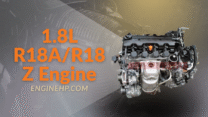
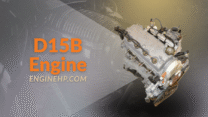
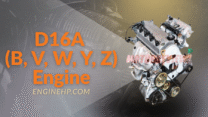
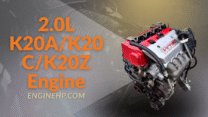
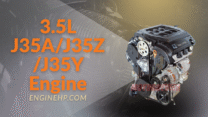
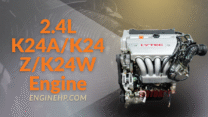

Leave a Reply